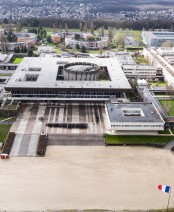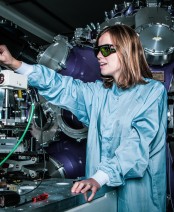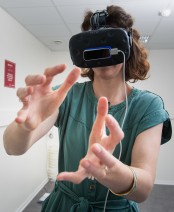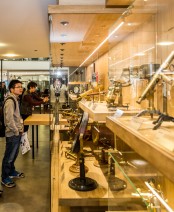Supernovae and Magnetic Fields in the Lab
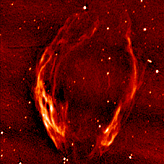
 Radiowave and X-ray pictures of G296.5+10.0 supernova from SNRcat
Radiowave and X-ray pictures of G296.5+10.0 supernova from SNRcat
A supernova happens when a star runs out of fuel and dies, generating a huge explosion that causes shock waves in the surrounding medium. These shock waves, known as supernova remnants, spread out for thousands of years across vast distances. If close enough to the Earth, they can be studied by astronomers.
Our best models predict that these remnants ought to be symmetric, as energy is flung out in all directions. However, our telescopes have taken many images which differ from our expectations. For example, the supernova remnant dubbed G296.5+10.0 (not yet well-known enough to warrant a catchier name) is symmetric along its vertical axis. Researchers have come up with many hypotheses to explain these observations, but up until now, it has been difficult to test them.
Paul Mabey, a researcher at École Polytechnique - Institut Polytechnique de Paris and his international collaborators from the University of Oxford, Helmholtz-Zentrum Dresden-Rossendorf, and the CEA reproduced this astrophysical phenomenon at a smaller scale in the lab in order to explain this mystery. To do this, the team made use of high-power pulsed lasers at the Laboratoire pour l’Utilisation des Lasers Intenses (LULI*) located on the École Polytechnique campus.
The team also used a large magnetic field, one hundred thousand times stronger than the one produced by the Earth, to test out different hypotheses. They found that, when this field was applied, the shock wave became elongated along one direction. The results support the idea that a large-scale magnetic field is present around G296.5+10.0 and is responsible for its current shape.
With this connection established, it is hoped that current and future observations of supernova remnants could be used to determine the strength and direction of magnetic fields throughout the Universe. In addition, the team have already begun planning future experiments at LULI in order to study these systems in more detail in the laboratory, with results expected next year.
> To read the full publication : https://doi.org/10.3847/1538-4357/ab92a4
*LULI is a joint research unit (CNRS-École Polytechnique-CEA-Sorbonne Université)
